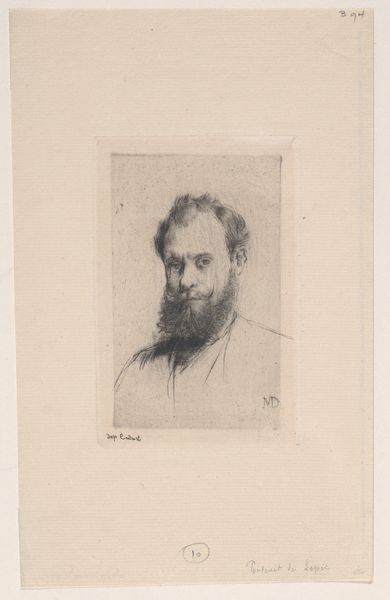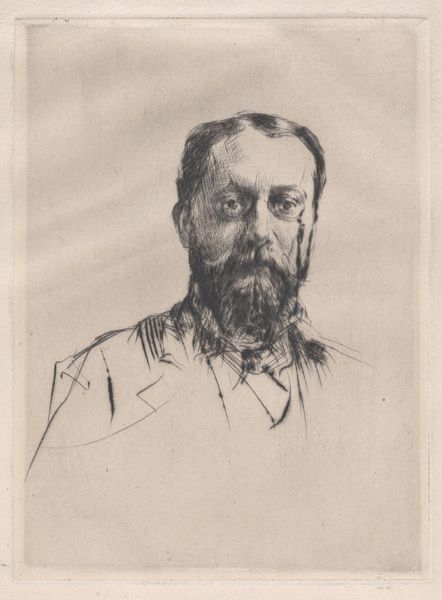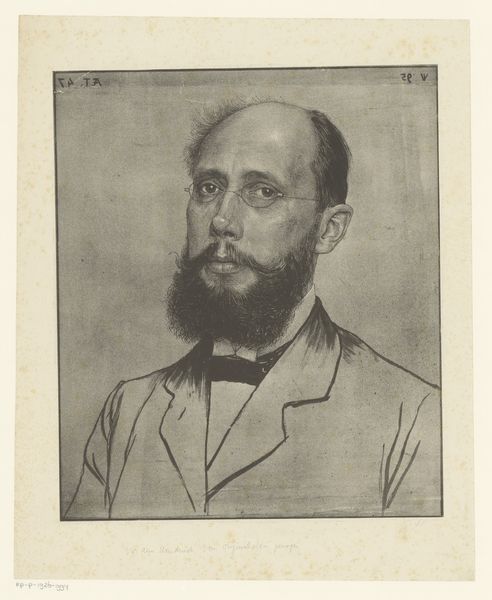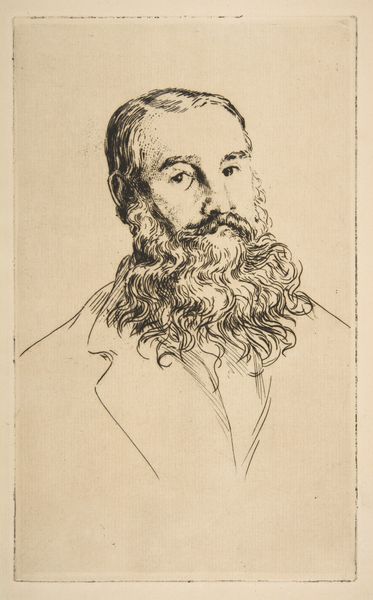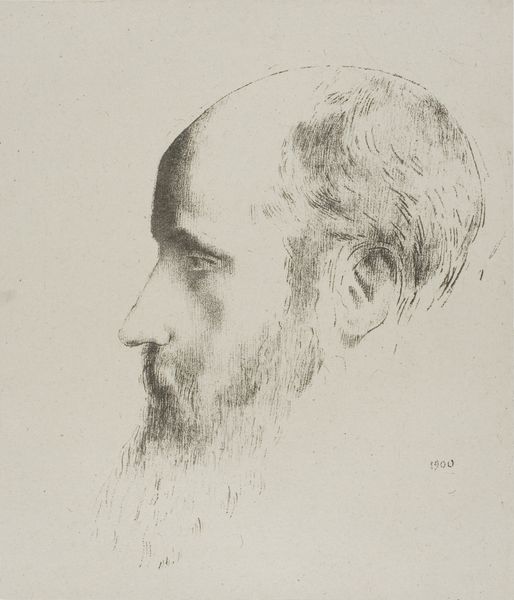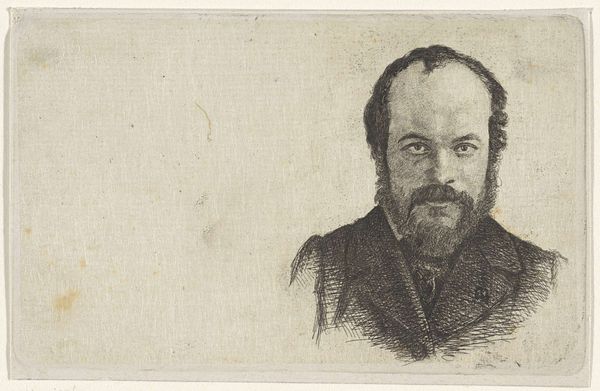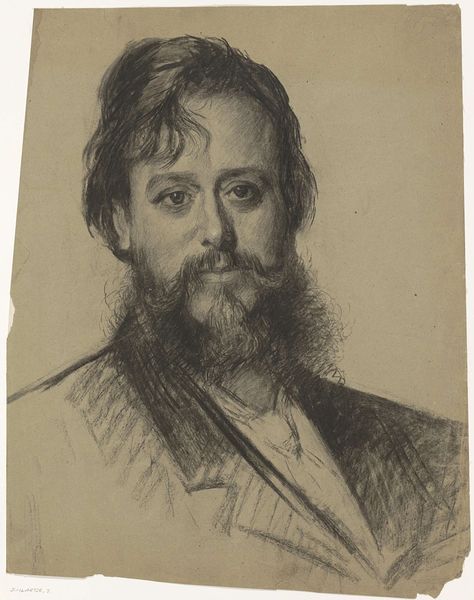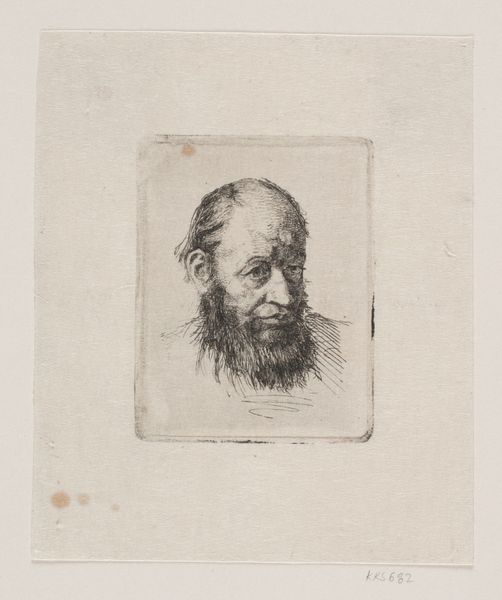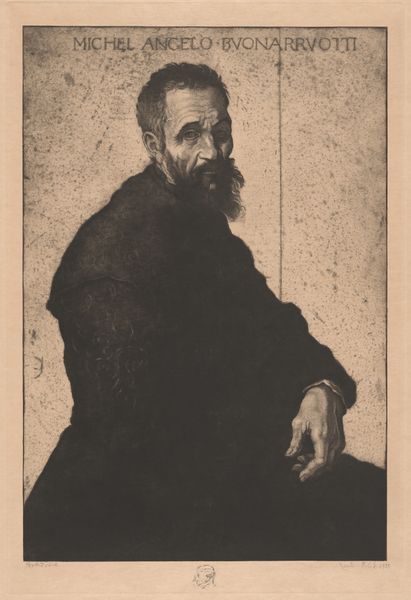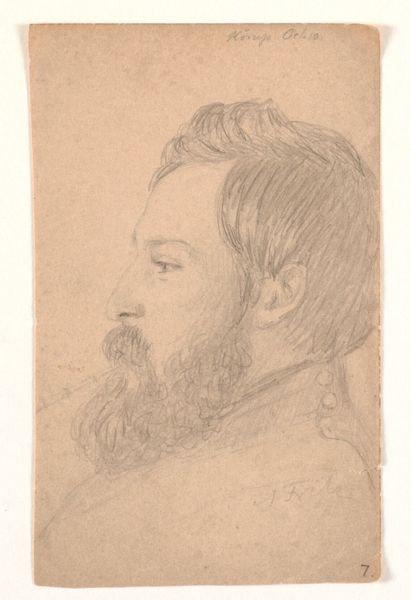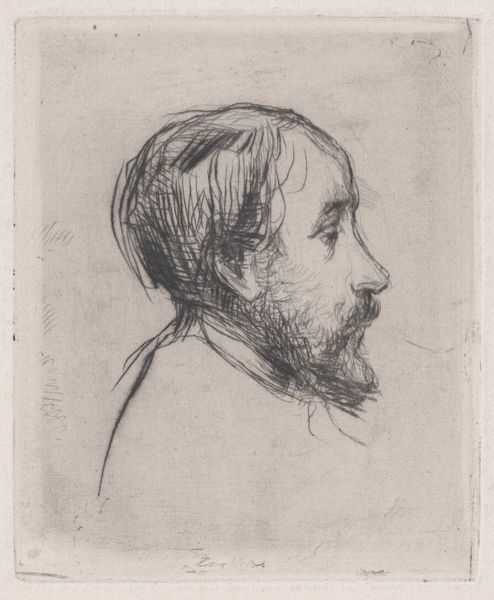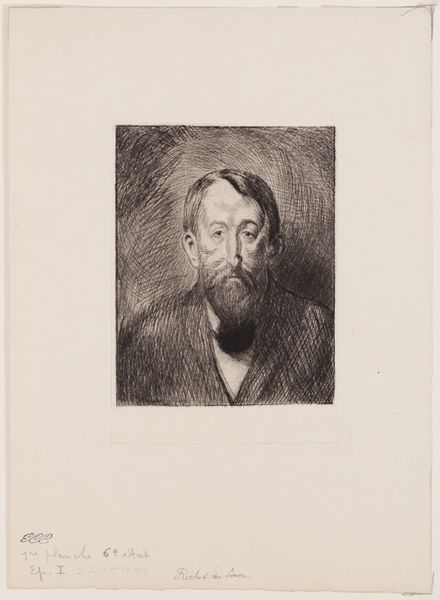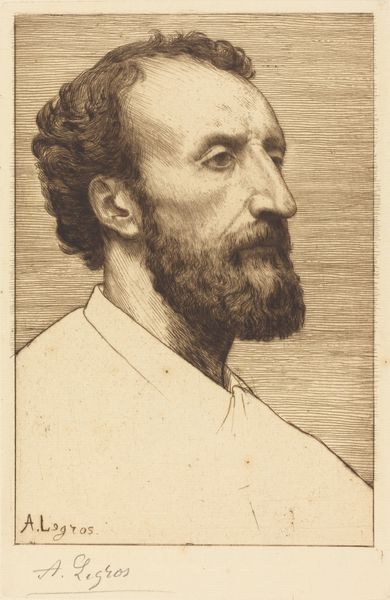
Portrait of Jules Jacquemart, from the "Gazette des Beaux-Arts" 1876
0:00
0:00
drawing, print, etching, engraving
#
portrait
#
drawing
# print
#
etching
#
portrait reference
#
pencil drawing
#
france
#
men
#
engraving
Dimensions: Sheet: 10 7/16 × 8 1/8 in. (26.5 × 20.6 cm) Plate: 6 1/8 × 4 3/4 in. (15.6 × 12 cm)
Copyright: Public Domain
Curator: Before us, we have Marcellin Desboutin's 1876 etching, a portrait of Jules Jacquemart, pulled from the "Gazette des Beaux-Arts." It's currently held here at the Metropolitan Museum. Editor: The portrait is so austere and contained. Despite the apparent softness of the lines, there’s a strong feeling of restriction—perhaps even weariness—emanating from the sitter. Curator: It's fascinating how Desboutin captures the spirit of the man, himself a renowned artist. He was best known for his detailed depictions of objects, jewelry and works of art for reproduction in various art publications of his time. There’s a circularity there, isn’t there? He is etched for reproduction in this journal. Editor: And consider the role of the "Gazette des Beaux-Arts" itself. This portrait situates Jacquemart within a network of artists and critics defining the artistic standards of the time. Who got depicted mattered immensely. To be rendered thus, in a very public form, speaks volumes about Jacquemart’s place within the art world's power structure. It is also striking how his gaze, coupled with the etching itself, serves to canonize, fix, and elevate him. Curator: Etching, with its reliance on controlled erosion, becomes quite potent in this context. It is both additive and subtractive, simultaneously. The lines Desboutin uses—their density and directionality—they construct both form and feeling, shaping not only our perception of Jacquemart, but perhaps also, our memory of him as the years go by. It's more than mere documentation. The engraver etches the face for us, thereby enshrining a man who etches forms for others. Editor: Right. The symbolic loading feels so intentional. We’re looking at the face of an era – an artistic sensibility being codified through reproducible media for the consumption and dissemination among a burgeoning art market and critical audience. And notice his expression, it's difficult to read-- knowing he is the subject, what is this carefully managed gaze meant to convey about himself as the subject and about the observer? Curator: It all converges, doesn’t it? The man, the method, the magazine... all contributing to the enduring mythos surrounding artistry. Editor: It's about preserving and propagating narratives about art and who is permitted to participate. Thinking about what images like this do. Powerful.
Comments
No comments
Be the first to comment and join the conversation on the ultimate creative platform.
